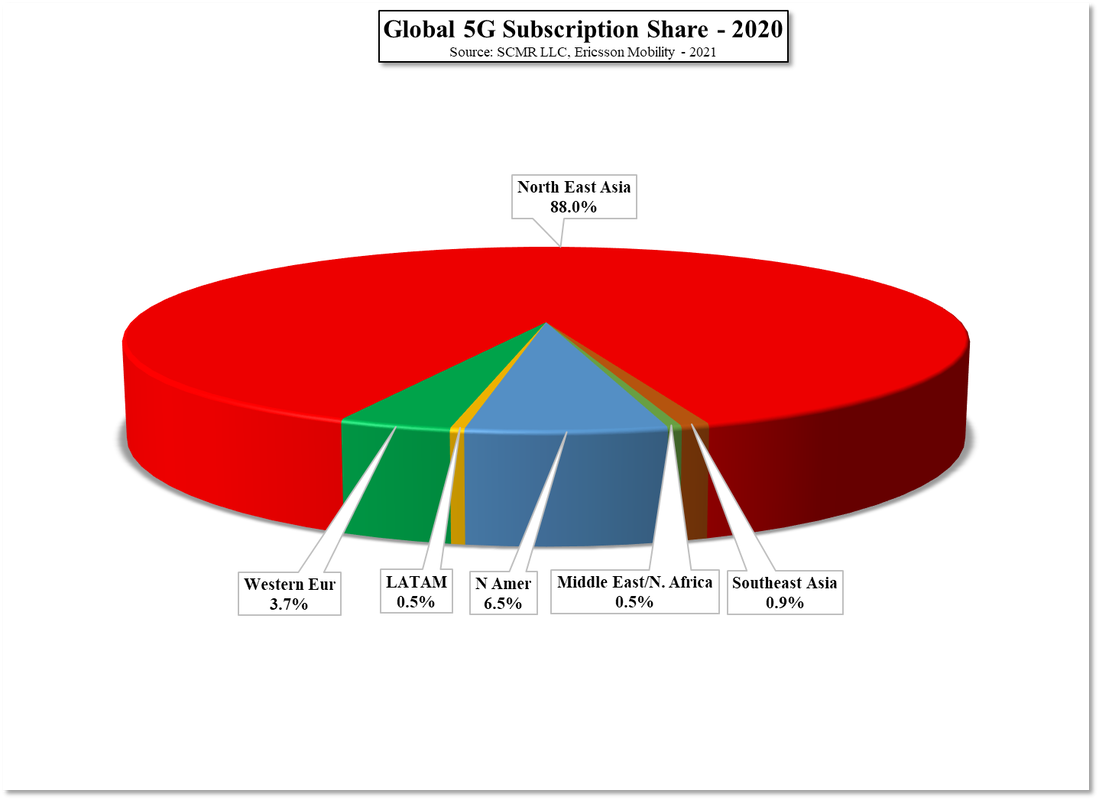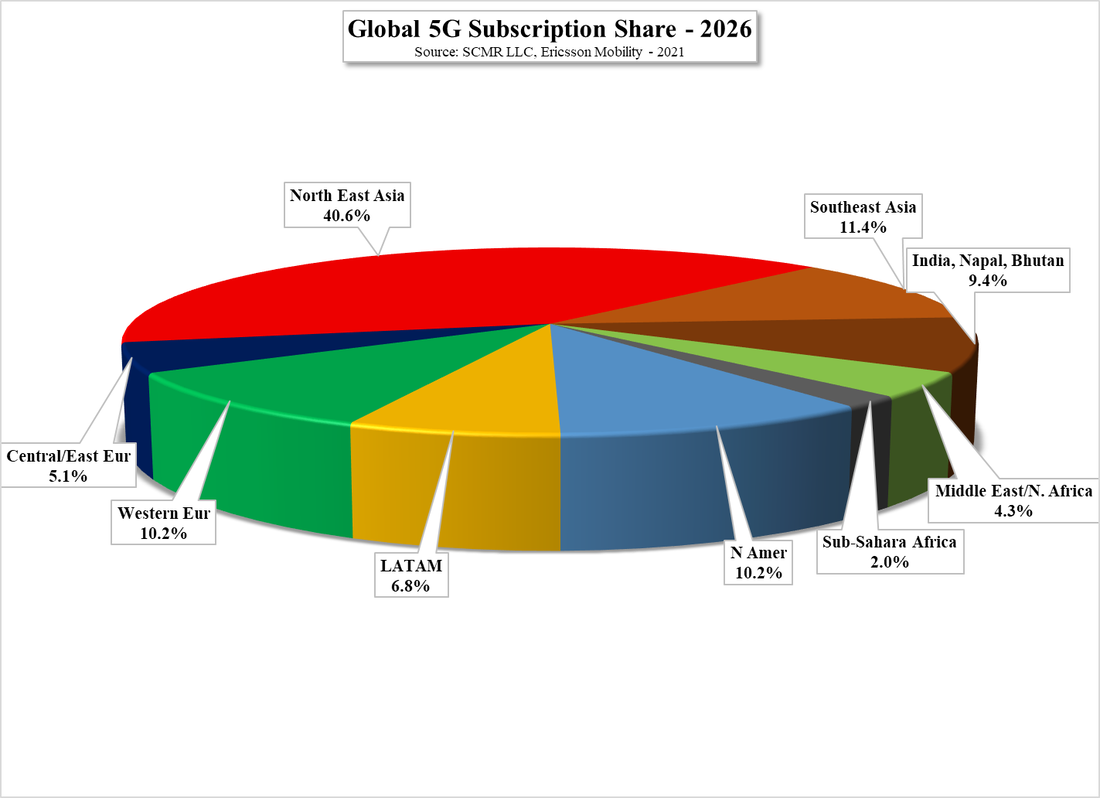Fixed Wireless Access
According to GSA there are over 460 operators globally that are investing in, acquiring licenses, developing pilot projects, or deploying FWA services, with 436 operators in 171 countries offering FWA services, or over half of all operators with commercial 4G or 5G networks. To be realistic, most (429 in 169 countries) are offering FWA using LTE (4G), however 63 operators are also offering 5G FWA, up from 44 at the end of last year. Europe has the most 5G FWA offerings (and also the most LTE FWA, with Eastern Europe alone having 41 4G/5G operators that are offering FWA, which is the same number as all of North America, and when adding all four regions of Europe, the total is 134 operators, while Asia (all regions) sees only 54 FWA operators, a surprisingly low number.
One area where things get a bit hazy for FWA however is service cost. Most FWA service plans are based on volume, for both 4G and 5G, but more recently, services based on speed have been gaining some momentum., although this is more common with 5G services, increasing at ~ 30% over the last six months according to GSA, but many offer ‘unlimited’ usage to attract customers. Unfortunately many of these service plans do contain limitations, usually by limiting speed after a volume threshold is reached, but there are still 92 operators offering truly unlimited 4G services and 18 offering 5G services with no caps or limitations, although not surprisingly the number of 5G unlimited plans has decreased over the last six months while the number of unlimited 4G plans has increased.
Another hazy area for FWA is speed. As noted there are both 4G and 5G FWA networks, with inherently different speeds, but there is little clarity when it comes to what actual FWA network performance will look like to the end user. Given the number of factors that might come into play concerning parameters that might affect overall network speed for both 4G and 5G, there is a bit of leeway here, but just for 4G FWA operators have promoted network speeds of anywhere from 2 Mbs to over 1.7 Gbs, while tests have indicated that the average 4G FWA network operated at a download speed of 96 Mbs, up slightly from 93 Mbs six months ago. 5G quotations from operators range from 20 Mbs to 4.3 Gbs, although about half are promoting download speeds of 250 Mbs to 1.5 Gbs, with the average tested speed being 658 Mbs, up from 604 Mbs six months ago, but to the credit of operators, the average network speeds promoted this year are down from last year, not the speed itself, but the range, which means the operators are getting more realistic in their FWA service promotions.
One last area of question about FWA services is installation. Outdoor antennae and equipment can be mounted on a roof or on a wall, while indoor CPE equipment can be located in the specific customer location, wherever the signal is the strongest (usually a window). Outdoor installations usually need an engineer to set up antenna and CPE equipment, while indoor installs are usually done by the customer, lowering the cost and time associated with the installation considerably, and while customers are likely to choose the lower cost option, operators also offer far more indoor FWA CPE options, now about 2 to 1 overall, and 1.5 to 1 for 5G, which is more sensitive to source direction of blockage, as the outdoor option needs more company support.
All in, FWA is becoming a real service that can compete with hard-wired services in many locations. With both 4G and 5G FWA CPE equipment available 56 sources, up from 31 last November, and 9 in November 2019, there is a rapidly developing ecosystem for FWA as a way to distribute high speed broadband across a commercial enterprise of a residential home., and as 5G, both mid-band and mmWave deployment continue, we expect FWA will become a more common service plan for those looking to enhance their network connectivity. While there are a few ‘hazy’ spots in the deployment of FWA, broadband has never been without same, and with the level of completion already seen between operators and equipment vendors for 5G, we expect FWA will make meaningful gains this year and more so in 2022 as more spectrum is released on a global basis. Names like Insego (INSG), MeiG (002881.CH), and Casa Systems (CASA) will get some of the press that more well-known FWA CPE suppliers like Huawei (pvt) and ZTE (000063.CH) might normally get.









 RSS Feed
RSS Feed